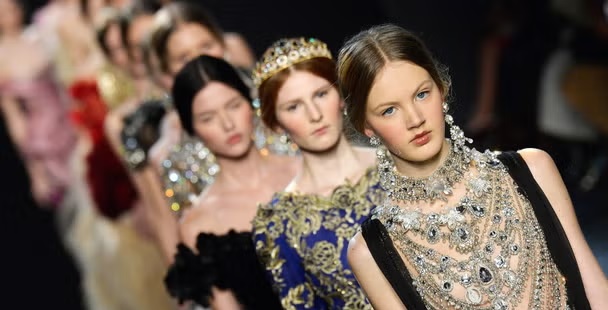Fashion is a reflection of cultural shifts, technological advancements, and personal expression. Designers and brands continuously adapt to evolving tastes while embracing sustainability, innovation, and craftsmanship. As the industry moves forward, several key trends are shaping the way people engage with style, materials, and design.
Sustainability: A New Standard in Fashion
The demand for environmentally responsible fashion is reshaping production, sourcing, and consumption. Consumers are no longer satisfied with disposable trends and are seeking clothing that aligns with ethical and sustainable values. Designers are responding with eco-friendly fabrics such as organic cotton, hemp, and Tencel, as well as innovative materials derived from mushrooms and seaweed.
Luxury houses and emerging brands alike are incorporating circular fashion principles, designing garments that can be repaired, repurposed, or recycled. Transparency in supply chains is becoming a priority, with brands providing details about labor practices, carbon footprints, and sustainable sourcing. As awareness grows, sustainability is no longer a niche concept but a defining standard in modern fashion.
The Influence of Technology on Design and Production
Technology is shaping the way garments are conceived, produced, and worn. Artificial intelligence is assisting designers in predicting trends, generating unique patterns, and personalizing fashion recommendations. Digital fabric printing and 3D knitting are reducing waste by allowing precision in production, eliminating excess materials.
The rise of virtual fashion is also making an impact. Digital clothing, designed for avatars in virtual spaces, is gaining popularity as individuals seek ways to express themselves in digital environments. Brands are experimenting with augmented reality, allowing customers to try on outfits virtually before purchasing. These innovations are expanding the definition of fashion, blending craftsmanship with technological advancements.
The Enduring Power of Minimalism and Timeless Elegance
While seasonal trends fluctuate, the appreciation for refined, timeless fashion remains unwavering. Clean lines, neutral palettes, and high-quality fabrics continue to attract those who value understated elegance. Designers are focusing on craftsmanship and structure, creating garments that transcend fleeting fads and remain relevant across seasons.
Tailoring is experiencing a resurgence, with well-constructed blazers, structured coats, and precisely cut trousers forming the foundation of modern wardrobes. The emphasis on timeless style speaks to a growing preference for investment pieces—clothing that endures in both quality and aesthetic appeal.
The Return of Statement Dressing
In contrast to minimalism, statement dressing is making an impact through bold silhouettes, vibrant colors, and intricate detailing. Dramatic sleeves, voluminous skirts, and structured shoulders are reclaiming their place in contemporary fashion, reflecting a desire for self-expression through striking design.
Rich textures, embellishments, and daring patterns are allowing individuals to create distinctive ensembles that stand out in everyday life. Designers are exploring heritage craftsmanship, incorporating embroidery, beading, and artisanal techniques that add depth and personality to modern pieces. The resurgence of statement dressing signals a shift toward embracing individuality in a way that feels intentional and refined.
The Influence of Gender Fluidity in Fashion
The distinction between menswear and womenswear continues to blur, as designers craft collections that defy traditional gender norms. Loose silhouettes, unstructured tailoring, and androgynous styling are gaining prominence, allowing for greater freedom in fashion choices.
Luxury brands and independent designers alike are championing gender-neutral clothing, offering pieces that are versatile and inclusive. Runway shows and campaigns reflect this shift, featuring models who challenge conventional representations of masculinity and femininity. The move toward fluid fashion highlights an industry that is becoming more attuned to individuality and self-expression beyond societal expectations.
The Role of Craftsmanship in Luxury Fashion
While fast fashion continues to influence the industry, there is a renewed appreciation for artistry and handcraftsmanship. Luxury houses are investing in skilled artisans, preserving techniques that have been passed down through generations. Handwoven textiles, intricate lacework, and bespoke tailoring are receiving the recognition they deserve, offering a counterpoint to mass production.
Collectors and fashion enthusiasts are seeking rare, handcrafted pieces that reflect a dedication to artistry. Limited-run collections, custom designs, and couture craftsmanship are regaining their prestige, reinforcing the idea that true luxury is defined not by excess but by meticulous attention to detail.
The Future of Fashion
Fashion continues to evolve in response to shifting cultural values, technological advancements, and artistic exploration. Sustainability, craftsmanship, and innovation are shaping an industry that embraces both refinement and self-expression. As individuals seek garments that reflect their values and personalities, designers are rising to the challenge, crafting pieces that balance modernity with timeless elegance.

